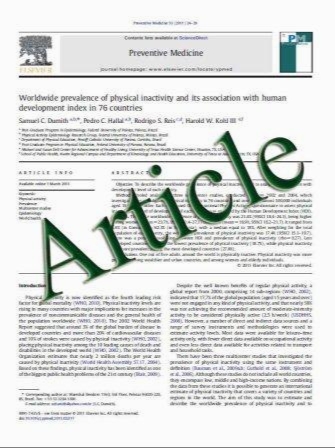Monitoring of neoadjuvant chemotherapy using multiparametric, 23Na sodium MR, and multimodality (PET/CT/MRI) imaging in locally advanced breast cancer
- نوع فایل : کتاب
- زبان : انگلیسی
- مؤلف : Michael A. Jacobs Ronald Ouwerkerk Antonio C. Wolff Edward Gabrielson Hind Warzecha Stacie Jeter David A. Bluemke Richard Wahl Vered S
- چاپ و سال / کشور: 2011
Description
We prospectively investigated using advanced magnetic resonance imaging (MRI) and positron emission tomography/computed tomography (PET/CT) to identify radiological biomarkers for treatment response in patients receiving preoperative systemic therapy (PST) for locally advanced breast cancer. Patients with a stage II or III breast cancer receiving PST were selected and underwent positron emission tomography (PET), magnetic resonance imaging (MRI), and breast biopsies at baseline and after the first cycle of PST (days 7–8) during the full course of treatment. PET/CT was acquired after injection of 2-deoxy- 2-[18F]-fluoro-D-glucose (18FDG, 0.22 mCi/kg) and quantified with standardized uptake value assessment (SUV). Diagnostic breast MRI and sodium (23Na) was acquired at 1.5 T. Total tissue sodium concentration (TSC), response criteria in solid tumors (RECIST), and volumes were quantified. Treatment response was determined by pathological assessment at surgery. Immunohistochemistry values of the proliferative index (Ki-67) were performed on biopsy specimens. Six of nineteen eligible women (43 ± 11 years) who received PST underwent radiological imaging of 18FDG-PET/CT and MRI for at least two cycles of treatment. Five patients had a pathological partial response (pPR) and one had pathological non-response (pNR). TSC decreased 21% in responders with increases in the non-responder (P = 0.03). Greater reduction in SUV was observed in responders (38%) compared to the nonresponder (22%; P = 0.03). MRI volumes decreased after cycle 1 by 42% (responders) and 35% (non-responder;P = 0.11). Proliferation index Ki-67 declined in responders in the first cycle (median = 47%, range = 29–20%), but increased (4%) in the non-responder. Significant decreases in TSC, SUV, and Ki-67 were observed in responders with increases in TSC and Ki-67 in non-responders. Our results demonstrate the feasibility of using multi-modality proton, 23Na MRI, and PET/CT metrics as radiological biomarkers for monitoring response to PST in patients with operable breast cancer.
Breast Cancer Res Treat (2011) 128:119–126 DOI 10.1007/s10549-011-1442-1 Received: 9 December 2010 / Accepted: 3 March 2011 / Published online: 1 April 2011 Springer Science+Business Media, LLC. 2011


